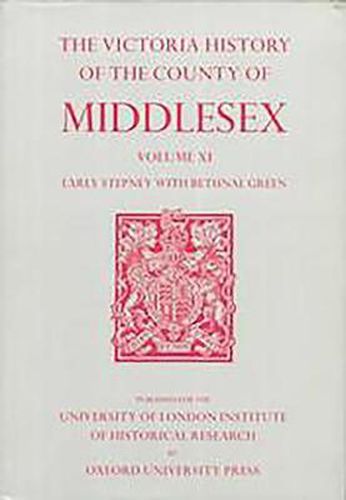Readings Newsletter
Become a Readings Member to make your shopping experience even easier.
Sign in or sign up for free!
You’re not far away from qualifying for FREE standard shipping within Australia
You’ve qualified for FREE standard shipping within Australia
The cart is loading…






Stepney had tidal mills along the Thames by 1086. In the Middle Ages it provided a land market for Londoners and courtiers. By Tudor times Poplar, Ratcliff and Shadwell were the most populous parts, where shipbuilding, victualling and recruitment had produced a rootless workforce. Subdivision of the large parish had started and ultimately was to leave only Ratcliff and, inland, Mile End Old Town and Mile End New Town. The growth of all the hamlets is traced to c. 1700, besides economic development to c. 1550 and their local government, religious life and charities. Bethnal Green, in the north-west, a parish from 1743 and metropolitan borough from 1900, is described to the present day. It contained Stepney’s manor house, offered country retreats by the 16th century, and was settled from the south-west in the 17th when silkweaving preceded the Huguenots. Harsher economic conditions, jerry-building and the spread of factories aggravated poverty and stimulated the concern of outsiders, including Dickens, who advised on the model Columbia market. From the 1890s council housing transformed the scene. This book is intended for local historians, professional and amateur, social, economic, architectural, ecclesiastical, landscape and family historians.
$9.00 standard shipping within Australia
FREE standard shipping within Australia for orders over $100.00
Express & International shipping calculated at checkout
Stepney had tidal mills along the Thames by 1086. In the Middle Ages it provided a land market for Londoners and courtiers. By Tudor times Poplar, Ratcliff and Shadwell were the most populous parts, where shipbuilding, victualling and recruitment had produced a rootless workforce. Subdivision of the large parish had started and ultimately was to leave only Ratcliff and, inland, Mile End Old Town and Mile End New Town. The growth of all the hamlets is traced to c. 1700, besides economic development to c. 1550 and their local government, religious life and charities. Bethnal Green, in the north-west, a parish from 1743 and metropolitan borough from 1900, is described to the present day. It contained Stepney’s manor house, offered country retreats by the 16th century, and was settled from the south-west in the 17th when silkweaving preceded the Huguenots. Harsher economic conditions, jerry-building and the spread of factories aggravated poverty and stimulated the concern of outsiders, including Dickens, who advised on the model Columbia market. From the 1890s council housing transformed the scene. This book is intended for local historians, professional and amateur, social, economic, architectural, ecclesiastical, landscape and family historians.